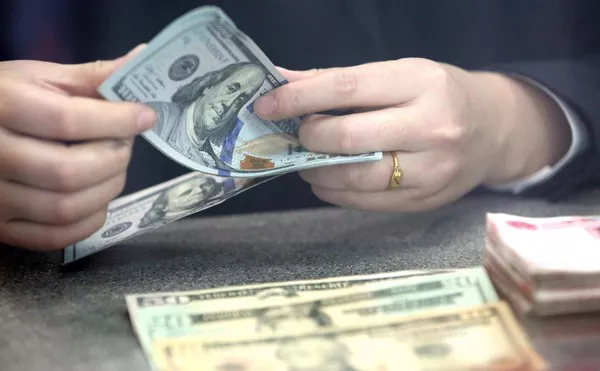When traveling or living in Mexico, one of the most important decisions you will need to make regarding your finances is whether to use US dollars (USD) or the local currency, the Mexican peso (MXN). Mexico, being a popular tourist destination, sees a significant number of international travelers, particularly from the United States. The question of which currency to use is often debated, as both options have their advantages and disadvantages. This article explores the factors that should be considered when deciding between using USD or pesos in Mexico, examining the impact on exchange rates, pricing, convenience, and potential fees.
Understanding the Currency Situation in Mexico
Mexico’s official currency is the Mexican peso (MXN), and it is the legal tender for most transactions across the country. The US dollar, however, is also widely accepted, particularly in tourist-heavy areas like Cancun, Puerto Vallarta, Mexico City, and Cabo San Lucas. In these regions, businesses may offer prices in either pesos or USD, or even both. Despite this, it’s important to understand the nuances of using either currency when you are in Mexico.
Exchange Rates and Conversion Costs
One of the most significant factors that affect the choice between USD and pesos is the exchange rate. Exchange rates between the US dollar and the Mexican peso fluctuate regularly, and these fluctuations can have a substantial impact on your costs. For instance, if the exchange rate between the USD and the peso is favorable, using USD could be advantageous, as you would receive more pesos for your dollars.
However, when paying with USD, there are often hidden costs involved. Businesses may provide their own exchange rate, which can be less favorable than the market rate. Typically, these rates will be marked up to cover the business’s own profit margins. As a result, you might end up paying more for a product or service in USD than you would if you were paying in pesos.
To get the best exchange rates, it’s recommended that you convert your US dollars into pesos at a local bank or exchange service, rather than relying on the exchange rates offered by businesses. You can also use ATMs to withdraw pesos directly, though be mindful of any associated fees, such as withdrawal charges or international transaction fees.
Pricing Differences
In many cases, goods and services in Mexico are priced differently depending on whether you are paying in pesos or USD. Businesses in tourist areas often cater to international visitors and may price their offerings in USD to make transactions easier for tourists. However, the prices in USD may be higher than those in pesos due to the fact that the cost of doing business in USD is often marked up for foreign customers.
For example, if you are staying in a resort or visiting a tourist destination, the prices you encounter may be quoted in USD, which could be less favorable than those listed in pesos. On the other hand, in local shops, markets, and non-touristy areas, goods are typically priced in pesos. In these locations, you will often find that the prices are lower, and the exchange rate works more in your favor when paying in pesos.
Moreover, paying in pesos provides you with better price transparency. If the price is listed in pesos, you can easily compare costs and make decisions based on the current exchange rate. Conversely, paying in USD could make it harder to determine whether you’re getting a fair deal, as businesses may round prices or adjust the rates according to their preferences.
The Convenience Factor
When deciding between USD and pesos, convenience is another important factor to consider. US dollars are often accepted in popular tourist destinations, making it easy for travelers from the United States to pay without having to worry about currency exchange. This can be particularly convenient if you have limited time and prefer not to visit a bank or ATM to convert your money.
Additionally, if you are visiting Mexico for a short period of time or only planning to visit popular tourist spots, using USD may seem like an easier option. You avoid the need to carry a large amount of pesos, and you can simply pay in USD when making purchases. However, this convenience comes at a cost, as mentioned earlier. The exchange rates used by businesses may not be in your favor, and you may end up overpaying.
If you plan to stay in Mexico for a longer period or visit areas where US dollars are not as widely accepted, using pesos will be more practical. Having pesos on hand allows you to make payments more efficiently and avoid the inconvenience of constantly having to convert currencies. Many businesses in less touristy areas may not accept USD at all, making it essential to rely on the local currency for day-to-day transactions.
Currency Conversion Fees
Whether you use USD or pesos in Mexico, it’s important to consider the fees associated with currency conversion. Banks, currency exchange services, and ATMs all typically charge fees when converting currencies. When withdrawing pesos from an ATM or exchanging dollars at a bank or currency exchange office, you may incur fees that reduce the amount of money you receive.
If you’re using your US debit or credit card, keep in mind that foreign transaction fees may apply. These fees can range from 1-3% of the transaction amount, depending on your bank or card issuer. In addition, if you are using your US credit card in Mexico, some businesses may charge additional fees for processing payments in foreign currencies.
To minimize the impact of currency conversion fees, it is advisable to:
- Use a credit or debit card that does not charge foreign transaction fees.
- Withdraw larger amounts of pesos at once to minimize ATM fees.
- Shop around for the best exchange rates at banks and currency exchange services.
The Risk of Exchange Rate Volatility
Exchange rates between the USD and the Mexican peso can fluctuate over time, and this volatility can have an impact on your spending in Mexico. If you use USD, you may find that the value of the dollar decreases against the peso, making goods and services more expensive than you anticipated. On the other hand, if the dollar strengthens, you could get more pesos for your money, potentially reducing costs.
If you are visiting Mexico for a short period and the exchange rate is particularly favorable at the time, you may benefit from using USD in the short term. However, for longer stays, relying on pesos may be a safer bet, as the exchange rate volatility may not work in your favor over time.
ATM Withdrawals and Local Banks
If you need to withdraw pesos, using ATMs in Mexico can be a convenient option. ATMs often provide competitive exchange rates, but it’s important to be aware of additional charges. Many ATMs charge a fee for international withdrawals, and the exchange rate used by the ATM may not be as favorable as the rate offered by your home bank. Additionally, your US bank may impose its own fees for using ATMs abroad.
To minimize these fees, consider withdrawing larger sums of pesos at once to reduce the number of transactions. Also, try to use ATMs located inside bank branches, as they are typically safer and may have lower fees compared to standalone ATMs. Be sure to notify your bank in advance of your travel to avoid any issues with card usage.
Considerations for Digital Payments
In recent years, digital payments have become increasingly popular in Mexico, particularly through mobile payment platforms like Apple Pay, Google Pay, and local services like MercadoPago. These digital payment methods allow you to link your credit or debit card and make payments in pesos, avoiding the need to carry physical currency.
While digital payments can be convenient, they often come with their own set of challenges. For instance, some services may still charge foreign transaction fees, and not all merchants may accept digital payments. It’s important to carry a mix of payment options, including pesos in cash, cards, and possibly USD if you are traveling to tourist areas.
Conclusion
Ultimately, whether it’s better to use USD or pesos in Mexico depends on a variety of factors, including the length of your stay, the areas you visit, and your preferred payment methods. While USD may be accepted in many tourist areas, using pesos typically provides better value, especially when considering exchange rates, hidden fees, and pricing differences.
For short trips or visits to tourist destinations, using USD may be convenient but could come at a higher cost due to unfavorable exchange rates. For longer stays or when traveling outside tourist areas, using pesos is the most practical choice, ensuring better price transparency and helping you avoid hidden fees. Regardless of your choice, understanding the local currency situation, comparing exchange rates, and minimizing transaction fees will help you manage your finances more effectively while in Mexico.
By weighing the pros and cons of using USD versus pesos, and by making informed decisions about when and where to exchange your currency, you can make the most of your money during your time in Mexico.
Related Topics:
























